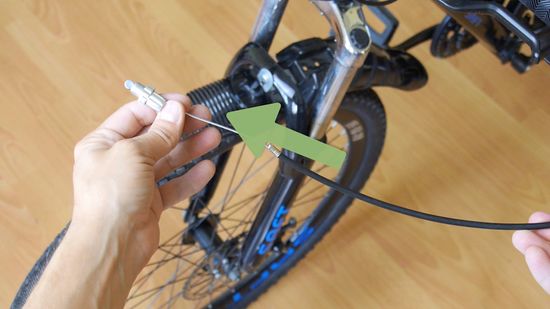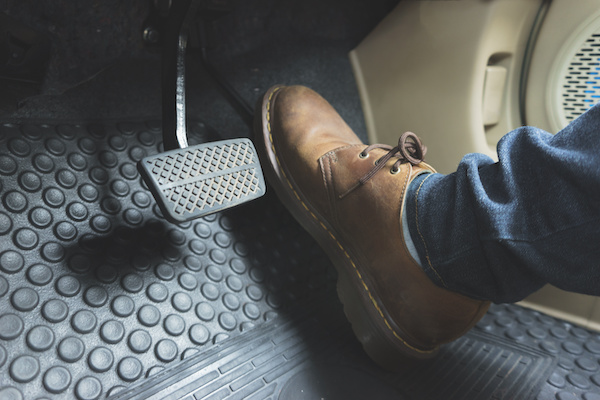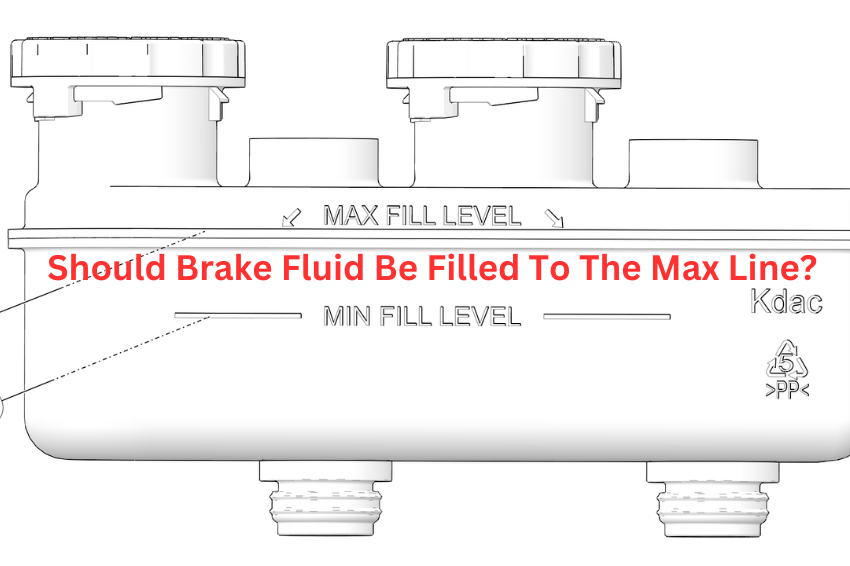No, don’t fill your brake fluid to the max line. Brake fluid reservoirs have a “min” and “max” line for a reason. Filling past the max can cause issues when the fluid expands with heat. Keep the fluid level between the lines for optimal braking performance.
How Often Should I Check My Brake Fluid Level?
Aim to check your brake fluid level every few months.
This timeframe allows you to catch any gradual changes or potential leaks before they become a safety hazard.
Here are some tips for building a routine:
- Combine with Other Maintenance: Combine checking your brake fluid with other routine car care tasks like oil changes or tire rotations. This ensures a more comprehensive check-up at regular intervals (as recommended by your car’s manual).
- Set a Reminder: Use your phone calendar or a reminder app to nudge you to check your brake fluid level every few months. Consistency is key for optimal car health.
However, here are what You’ll Need:
- Your car’s owner’s manual
- A clean rag
To check your Brake fluid level:
- Park on a level surface and turn off the engine.
- Locate the brake fluid reservoir under the hood. Refer to your manual for exact placement. It’s usually a translucent plastic container labeled “brake fluid.”
- Pop the hood and identify the reservoir. Most have a min and max fill line printed on the side.
- Wipe the dipstick (if your car uses one) or the inside of the reservoir with the clean rag. This provides an accurate reading.
- Check the fluid level. It should be between the minimum (min) and maximum (max) fill lines.
With that said,
Fluid at the minimum line or below might indicate a leak.
Consult a qualified mechanic for a professional inspection and potential repairs.
Do not top up the fluid yourself as there could be an underlying issue causing the drop.
Also, fluid above the maximum line is less common, but overfilling can also be problematic.
It’s best to consult your manual or a mechanic for proper action.
Please note, that the color of your brake fluid can also be an indicator of its condition.
Fresh fluid is usually clear or light yellow.
Dark brown or murky fluid may be due to age or moisture contamination, and a mechanic might recommend a brake fluid flush.
Can Low Brake Fluid Cause Spongy Brakes?
Yes, low brake fluid can cause a spongy brake pedal.
Modern cars utilize a hydraulic brake system.
Think of it as a supercharged version of a bicycle brake with a cable.

Squeezing the brake lever on a bicycle tightens the cable, pressing the brake pads against the wheels to stop them.
In your car, brake fluid acts like the cable, but in a much more powerful hydraulic system.
When you press your car’s brake pedal, it pushes a piston in the master cylinder.
This piston compresses brake fluid, an incompressible liquid.
Since liquids can’t be easily compressed, the pressure you apply to the pedal travels through the brake lines to the calipers at each wheel.
The calipers house pistons that squeeze the brake pads against the rotors, slowing down or stopping the wheels.
Here’s where low brake fluid becomes a concern:
If the brake fluid level in the reservoir dips below the recommended level, there’s simply not enough fluid in the system to create the necessary pressure when you press the brake pedal.
Remember the bicycle analogy, with a loose cable (low fluid), you have to squeeze the lever harder (spongy pedal) to get the same stopping power.
A spongy feeling is a warning sign that your brakes aren’t functioning optimally.
This can be a safety concern as it can affect your ability to brake effectively.
While a spongy brake pedal is a sign of low brake fluid, there are other indicators:
- The brake pedal goes lower than usual before engaging.
- It takes considerably more effort to stop the car.
- You hear a grinding noise when braking.
However, If you experience a spongy brake pedal, addressing it promptly is important, and here’s what to do:
- Park safely and turn off the engine.
- Consult your car’s owner’s manual to locate the brake fluid reservoir.
- Check the fluid level. It should be between the minimum and maximum fill lines indicated on the reservoir.
- Do not add fluid yourself if the level is low. There could be an underlying leak in the system that needs professional attention.
What Happens If I Overfill My Brake Fluid?
While it might seem like a minor mistake, overfilling your brake fluid reservoir can actually be a safety concern.
Brakes are a critical system in your car, and keeping them functioning properly is essential.
Here’s why exceeding the recommended fill level for brake fluid can be problematic:
- Spongy Brakes: Brake fluid expands when it heats up due to friction during braking. An overfilled reservoir can cause this expansion to push back on the brake system, creating a spongy feeling when you press the pedal. This can be similar to the sensation you might experience with low brake fluid, making it difficult to judge how much pressure you need to apply to stop the car safely.

- Fluid Overflow: If the reservoir is overfilled, the expanding brake fluid can overflow and leak out. This can damage nearby components in the engine bay or reduce the overall amount of fluid available in the braking system, affecting braking performance.
- ABS System Issues: Modern Anti-lock Braking Systems (ABS) rely on precise pressure control to prevent wheel lockup during hard braking. An overfilled reservoir can interfere with this system’s functionality, potentially reducing its effectiveness in urgent situations.
However, If you suspect you’ve accidentally overfilled your brake fluid reservoir, don’t attempt to fix it yourself.
The best course of action is to have a qualified mechanic inspect your brakes.
They have the expertise and tools to safely remove any excess fluid and ensure your braking system is functioning properly.
Reference Sources:
